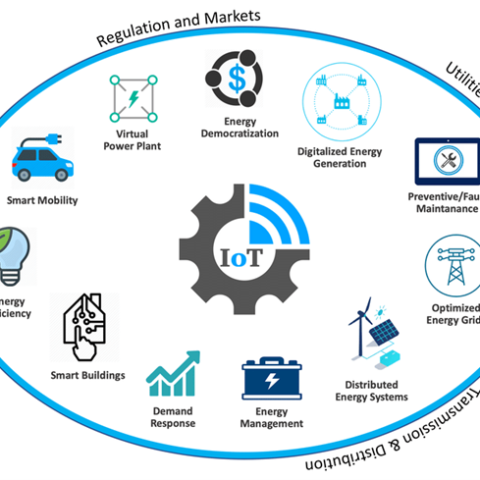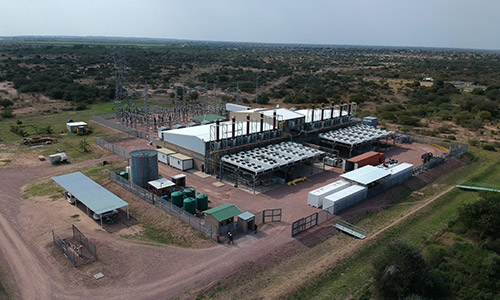Over the last decade and counting, Europe allowed itself to become highly dependent on Russian natural gas.
That’s primarily because Europe’s natural gas production started declining rapidly after 2010 while Russian gas remained economical and abundant.
Although alternative supplies such as LNG (liquefied natural gas) imports were increased by over 80 billion cubic meters (bcm) since 2016, this failed to cover declining domestic production.
This history is evident in this figure from the Center on Global Energy Policy:

Source: Columbia / SIPA Center on Global Energy Policy
Russia continued as the convenient, go-to supplier and Europe’s dependency was sealed. By 2020, Europe was importing about 185 bcm of Russian gas, which was about 36% of their 512 bcm total demand. Using the latest figures, Europe still buys about 155 bcm of natural gas from Russia each year.
Russia is by far Europe’s largest gas supplier, and of course that dependency created an awkward dilemma when Russia invaded Ukraine on February 24, 2022.
Sanctions of every kind were suddenly on the menu.
Europeans, by and large, don’t want to support Russia’s economy (and war effort) by buying Russia’s natural gas.
Yet they don’t have much room to maneuver. If Europe boycotts Russian gas, they have an unavoidable (and significant) shortfall that would generate an immediate, major energy crisis.
What’s more, if Russia cuts off its gas to force Europe to relax sanctions, the same difficult situation arises.
Those 155 bcm will need to come from somewhere.
This infographic from Visual Capitalist shows the possible substitute nations who could (theoretically, at least) step in as alternative suppliers:

Source: Visual Capitalist
However, there are virtually no pipeline connections between Europe and any of the countries shown in the graphic (Russia is pretty much the only one). That means the only feasible option is to acquire LNG carried by ships.
The US is the world’s biggest natural gas producer, so one possible source is US supply exported via newly constructed LNG terminals. Total US export capacity should be 124 bcm, meaning there would still be a shortfall even if the US sold Europe their entire export capacity.
They won’t be doing that, however. In fact, the US has committed to supplying only an additional 15 bcm to Europe by the end of this year. Note that domestic demand consumes almost all US supply in the first place.
Who else is there? Well, Qatar is also looking to expand its LNG export capabilities from approximately 114 bcm to 176 bcm.
Additional supplies as large as 10 bcm may be available from Azerbaijan, Algeria, and Morocco but only if various political disputes are resolved as soon as possible.
So there is no immediate way to replace Russian natural gas.
That means …
Europe has no easy way out
In the short and even medium term, Europe is in trouble.
That’s because even if the new export capacities from the US, Qatar, Azerbaijan, Algeria, and Morocco were all available right now (they aren’t), there’s another problem.
It appears “most of Europe's LNG terminals are operating at full capacity, especially in north-west Europe, where they feed large economies, [like] Britain, France and Germany, raising the question of how much more LNG can be processed” according to a Reuters report.
The same article continues: “Spain has the continent's biggest capacity, with six terminals, while Germany has none. The utilisation rate for the Spanish terminals was just 45% in January … The problem with Spain is that it has limited pipeline connections with the rest of Europe with only one pipeline that could take gas from Spain to France and so capacity is restricted somewhat.”

Source: Visual Capitalist
So there’s literally no more capacity where the gas is needed most, and no pipelines to connect to the under-capacity areas such as Spain.
That explains why Germany is now desperately building new LNG import facilities. Collectively, these ongoing efforts should offset 20% of Europe’s Russian dependence. However, it won’t be 2025 or even 2026 before that infrastructure is available.
It should also be noted that Europe is competing with Japan, South Korea, China, and India for LNG imports in the global markets.
The result is that for now, global export capacity is already maxed out. And international export and European import capacity additions won’t come online for as many as three more years.
It gets even worse, though …
A Sobering Near Future
International oil and gas expert Dr. Anas Alhajji has some strong views on the European gas situation as per his recent interview with Macrovoices host Erik Townsend (There Is No Escaping The Coming Energy Crisis):
“… the issue here is [Russian] long term contracts, Russia did not stop the flow of gas that is based on long term contracts. So some of the long term contracts are coming to an end in the coming months. And Russia basically saying, I am not going to renew the contract unless you pay me [in rubles]. And the EU already decided ‘we will not pay you in rubles.’
“So what's going to happen then? Any cut off in Russian supplies, that's where the crisis is because the US cannot compensate for the Russian loss at this stage.”
“[Russia] already did that with other countries. I think they've done so far with four or five countries. And they literally stopped gas supplies to those. The only issue is these are small countries. And the amount of gas is small, and therefore, it does not cause that much pain in terms of loss of revenues. But we don't know what's going to happen with the larger countries and with the larger contracts, whether there will be a pressure on that or not.”
Dr. Alhajji is referring to this news as reported by ABC News: “Russia has already cut off gas to Poland, Bulgaria, Finland, Denmark and Netherlands, saying they had refused to pay their bills in Russian currency.”
What’s more, “12 EU countries have faced halts to, or reductions in, their Russian gas deliveries.” Russia’s near 40% supply of Europe’s natural gas before the war has already dropped to about 15%, sending prices through the roof and straining energy-intensive industries.
Europe as a whole could be cut off from natural gas supplies before it has a chance to re-organize and correct the import/export problems mentioned above.
That makes the demand for additional natural gas more urgent than ever.
What can Europe do if Russia decides to force the issue?
The European Union must be prepared for further disruptions of gas flows and a potential “complete cut-off of Russian gas,” according to European Commission president Ursula von der Leyen. This includes filling gas storage facilities to at least 80% capacity before next winter. It also includes a new agreement that member states cut their gas use by 15% between August and March. Europe wants to avoid the appearance of forced rationing, so they’re agreeing to voluntary reductions now instead. But the belt-tightening is happening either way.
Besides cutting back on gas, part of Europe’s solution could include switching to oil.
Here’s Dr. Alhajji again:
“If spot LNG will go through the roof, we are going to see switching to oil in power plants, we're going to see private generation going through the roof, especially in China, that's going to put massive pressure on the oil market. So that substitution is going to matter.”
Europe can also switch to coal.
In fact, major countries like Germany and the Netherlands are already turning to coal to ensure they have enough power. Coal was worth about $50 U.S. a ton two years ago. But now it’s close to $400 due to spiking demand.
Needless to say, all these alternatives will threaten Europe’s progress toward addressing climate change. More oil and more coal, along with increased (and carbon-intensive) LNG shipping, are making life difficult.
Are Renewables the Answer?
Apparently not.
It seems the rising prices of key metals (copper, steel, polysilicon, and more) and the length of time it takes to implement renewable energy projects makes fossil fuels the pragmatic choice right now.
Even though the EU recently boasted that renewable energy sources accounted for 37.5% of gross electricity consumption in 2022 (wind and hydro constituted two-thirds of output), it’s still not enough.
Europe needs energy now.
Wind and solar power are expected to contribute some 22.5 bcm (equivalent) to replace Russian gas. A projected 10 bcm will come from wind and 12.5 bcm from solar, but those numbers are small in comparison to the 155 bcm it takes to eliminate Russian gas and the projects aren’t yet completed.
So natural gas is still the best of Europe’s available baseload energy options.
And that places a premium on efficiency. More efficient natural gas usage is now more valuable than ever. Getting the most from every cubic meter is crucial as gas prices skyrocket due to the supply and demand imbalance.
That’s where gas powered engine solutions can help.
A gas-fired power station is also more flexible and needs less time to start and stop than its coal-fired equivalent. It follows that natural gas projects partner well with variable renewable energy sources such as solar and wind. (Renewables are another possible option to help relieve Europe’s Russian gas dependency, but they can’t be built overnight and are highly dependent on geography to provide real benefits.)
What’s more, many gas engine installations are 'lean-burning' to ensure fast combustion and lower pollution levels. Gas engine technology typically burns fuel with an electrical efficiency that can rise as high as 50% in simple cycle and 54% in combined cycle mode.
Such engines also enjoy the flexibility common to internal combustion engines we see in our everyday lives: they can quickly start, accelerate and stop according to specific needs, and require only a negligible amount of cooling water relative to their power output.
While nothing short of infrastructure mega-projects can help address Europe’s non-Russian supply issues, efficient gas engines can help Europe make the best use of the gas they can access right now.
How ADC Projects Can Help
At ADC Projects, we sell expertise in the natural gas power plant sector and more broadly in the energy market to commerce and industry. We provide both big and small hybrid solutions including Project Development, Project Management Operations and Maintenance, Engineering and consulting services to develop and install a variety of power projects including gas engine operations.
It’s now more important than ever to save time and money and gain a real energy advantage over your competition, please contact us today.









